#SmartGrid
Explore tagged Tumblr posts
Text

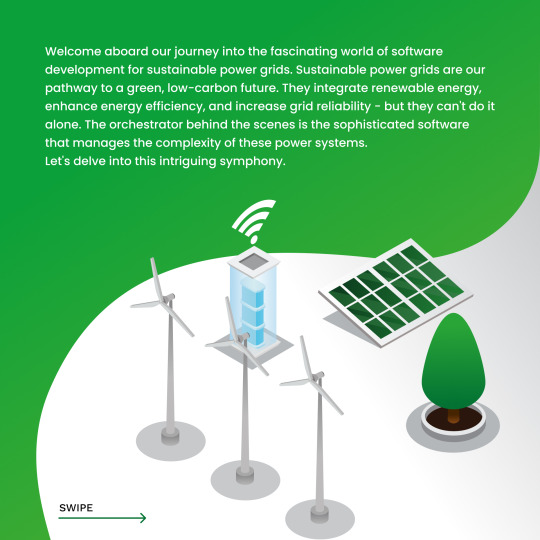
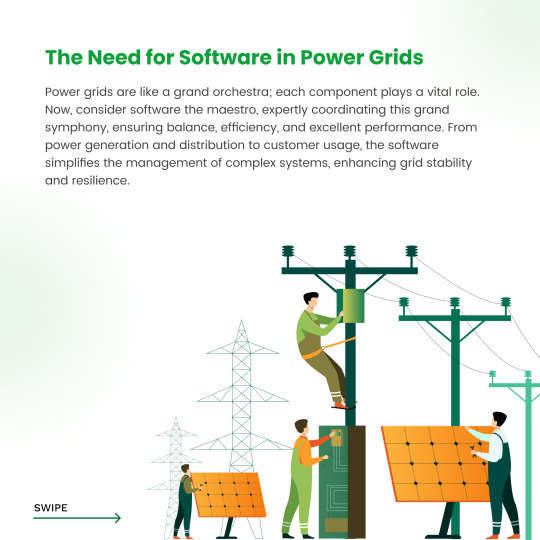
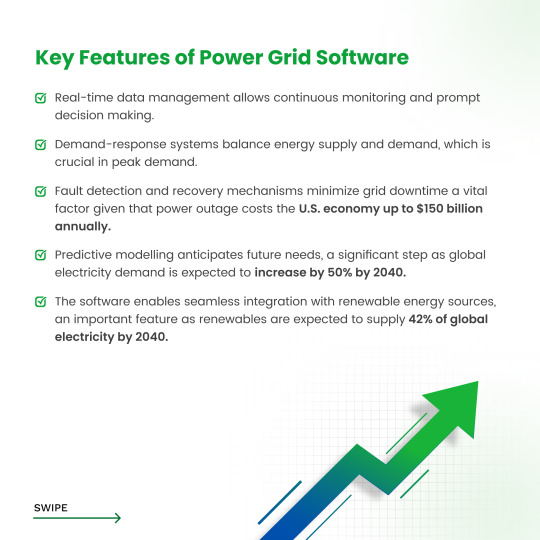
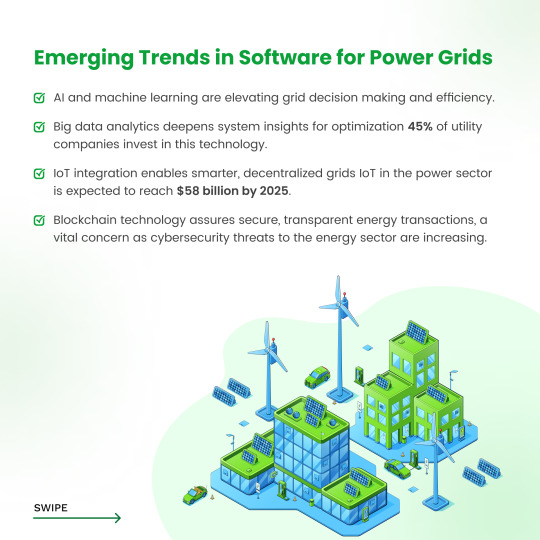

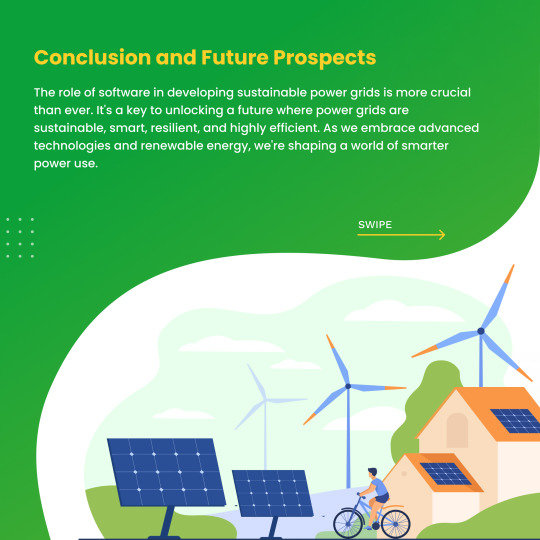

Explore a world where technology meets sustainability; step into the captivating world of software development for sustainable power grids with Us! Join us in this groundbreaking carousel that showcases the untapped potential of software in creating a greener future.
#renewableenergy#softwaredevelopment#smartgrid#power grid#energy solutions#software solutions#software#technology#sustainable#future#mobio solutions
6 notes
·
View notes
Text
🔌 How is the Smart Meters Market transforming the global energy landscape in 2024 and beyond?
🔍 What does the latest Smart Meters Market report cover? A deep analysis of market opportunities, challenges, and technological advancements—offering insights into size, share, CAGR trends, and the strategies of key players worldwide.
💡 How did COVID-19 impact the Smart Meters industry? The report explores its effects from both global and regional angles—highlighting production-to-consumption shifts and recovery strategies adopted by industry leaders.
🏢 Who are the key players shaping the Smart Meters Market? Top companies include:
Diehl Stiftung & Co. KG
Wasion Group Holdings
Aclara Technologies LLC
Landis+Gyr Inc
Itron Inc
General Electric Ltd
Kamstrup A/S …and more.
📊 Market Segmentation: By Type: • Hardware • Software & Service
By Application: • Residential • Commercial • Industrial
🌍 Which regions are seeing the most growth?
North America
Latin America
Europe
Asia Pacific
Middle East & Africa
📈 What’s inside the report?
Market forecasts & price analysis
Sales channels & gross margins
Competitive landscape & strategic moves
Regional import/export insights
PEST analysis & market entry strategies
📘 Explore the full report here: 👉 Smart Meters Market Report 📄 Get a sample copy: Request PDF
#SmartMeters#EnergyEfficiency#IoT#Utilities#SmartGrid#MarketResearch#CleanEnergy#TechInnovation#Sustainability#SmartTechnology#IndustryTrends#EnergyTech#GridModernization#Renewables#DigitalTransformation#COVID19Impact#BusinessStrategy#GlobalInsights
0 notes
Text
⚡Harnessing wind 🌬️ and solar ☀️ in a smart microgrid, this study fuses hydrogen storage 🧪, batteries 🔋, and AI-driven digital twins 🤖. Real-time decisions boost output 🌐 and slash costs 💰 by over 50%! A bold leap toward scalable, zero-carbon energy futures 🌍🌿. World Top Scientists Awards Visit Our Website 🌐: worldtopscientists.com Nominate Now📝: https://worldtopscientists.com/award-nomination/?ecategory=Awards&rcategory=Awardee Contact us ✉️: [email protected] Here Connected With: ================== Whatsapp : whatsapp.com/channel/0029Vb5At1zDuMRbivne3i17 Youtube: www.youtube.com/@topscientistsawards Twitter: twitter.com/Topscienti50880 Linked in: https://www.linkedin.com/in/world-top-scientists-awards-6a0768282/ Pinterest: in.pinterest.com/topscientists/ Blog: scientistsawards25.blogspot.com/ Instagram: www.instagram.com/world_top_scientists/
#Sciencefather#ResearchAwards#GreenEnergy#SmartGrid#MicrogridInnovation#SustainablePower#HydrogenStorage#DigitalTwin#RenewableIntegration#CleanTech#EnergyTransition#ZeroCarbonFuture#GreenEconomy#SmartEnergySolutions#WorldTopScientistsAwards
0 notes
Text
Distribution Transformers: The Backbone of Local Power Delivery
Introduction:
In every city, town, and village, distribution transformers are silently working to ensure that electricity reaches homes, offices, and industries at usable voltage levels. These essential components of the power distribution network reduce high-voltage electricity from the transmission lines to lower levels suitable for consumer use. Engineered for energy efficiency, reliability, and longevity, distribution transformers are vital for maintaining uninterrupted and safe power supply.

Purpose of Distribution Transformers:
To step down high transmission voltage (usually above 11kV) to safe, usable levels (230V/415V)
To provide efficient local power distribution for residential, commercial, and small industrial applications
To minimize power losses during final-stage transmission
To ensure voltage stability and consistent supply for end-users
To bridge the gap between the power grid and consumer premises
Key Features:
High Efficiency: Meets or exceeds BEE and BIS efficiency standards
Low Loss Design: CRGO/Amorphous core materials reduce core and copper losses
Advanced Insulation: High-grade insulation for thermal and dielectric strength
Customized Voltage Ratings: Available in multiple ratings and configurations (11kV/22kV/33kV)
Rugged Build: Weather-resistant tanks and robust mechanical construction
Safety Protections: Equipped with pressure relief valves, Buchholz relay, oil level indicators
Oil- or Dry-Type Options: Available in mineral oil or eco-friendly dry-type insulation
Easy Maintenance: User-friendly design for routine inspection and servicing
Applications:
Distribution transformers are used in a wide variety of settings:
Residential Areas: Delivering electricity to homes and apartments
Commercial Buildings: Powering shops, malls, offices, and schools
Small and Medium Industries: For motors, machinery, and processing units Hospitals and Institutions: Ensuring clean and reliable power
Utilities and Substations: As part of state electricity boards and private DISCOM networks Renewable Projects: Distributing power from solar or wind to local loads
Conclusion:
Distribution transformers are a critical link in the electrical power chain, responsible for delivering energy safely and efficiently to the end user. With high performance, energy-efficient design, and long service life, Padmavahini’s distribution transformers are trusted across India to meet diverse voltage requirements. Whether in rural villages or urban centers, these transformers ensure that power is always within reach.
Company Details
📍 Company Name: Padmavahini Transformers 🌐 Website: Padmavahini Transformers 📞 Contact No: +91 99430 49222 📧 Email: [email protected] 📍 Address: S. F. No. 353/1, Door No. 7/140, Ruby Matriculation School Road, Keeranatham, Saravanampatti, Coimbatore, Tamil Nadu - 641035, India.
🔗 Follow Us on Social Media: 📘 Facebook 📸 Instagram
#DistributionTransformer#ElectricityDistribution#PadmavahiniTransformers#PowerSolutions#EnergyEfficiency#SmartGrid#RuralElectrification#ReliablePower#TransformerTechnology#LowVoltageSupply#MadeInIndia
0 notes
Text
⚡ What is Power Engineering?
#PowerEngineering#EnergySystems#ElectricalEngineering#SmartGrid#RenewableEnergy#ElectricPower#EnergyInfrastructure#EngineersHeaven#PowerGeneration#STEMeducation#SustainableEnerg
1 note
·
View note
Text
Energy & Power Quality Meters Market Drivers Include Grid Modernization, Industrial Automation, and Rising Energy Efficiency Needs
The energy & power quality meters market is witnessing substantial growth, propelled by several dynamic and interconnected drivers that span industries and geographies. As energy systems become more complex and demand for uninterrupted, clean, and efficient power grows, the role of power quality meters becomes increasingly critical. These meters help monitor, manage, and optimize power usage while detecting anomalies that could affect system performance. The market’s expansion is being driven by technological, regulatory, economic, and environmental factors, positioning these meters as indispensable components in modern energy infrastructure.

One of the primary market drivers is grid modernization and the growing need for smart energy management. Power grids across the world are undergoing transformative upgrades to meet the rising demand for renewable integration, distributed generation, and energy storage systems. Power quality meters play a vital role in these smart grid initiatives by providing real-time data on power parameters such as voltage, current, harmonics, and frequency. Utilities rely on this information to detect and address power quality issues, reduce energy losses, and ensure consistent delivery across aging and overloaded infrastructure.
In parallel, the rise of industrial automation and digitization is significantly fueling market demand. Manufacturing plants, data centers, and commercial complexes are deploying advanced power quality meters to enhance process reliability and protect sensitive equipment. Automated systems, including robotics and programmable logic controllers (PLCs), require stable and clean power to function optimally. Even small voltage sags or surges can lead to downtime or equipment damage. Energy and power quality meters provide visibility into power anomalies and trends, allowing timely corrective actions and reducing costly disruptions.
Another critical driver is the increased emphasis on energy efficiency and sustainability. Organizations across sectors are actively seeking ways to optimize their energy usage to lower operational costs and reduce carbon emissions. Power quality meters support these initiatives by offering precise consumption insights, load profiling, and demand tracking. This enables facility managers and energy consultants to identify inefficiencies, correct poor power factor issues, and implement targeted energy-saving strategies. The global push for carbon neutrality and green building certifications further accelerates the deployment of these monitoring tools.
Regulatory mandates and government policies are also pivotal in driving the market forward. Countries across North America, Europe, and Asia-Pacific have implemented standards and incentives that require or encourage the use of energy monitoring systems. These include mandates for energy audits, minimum energy performance standards, and grid compliance requirements. By helping companies meet these regulations and improve energy reporting, power quality meters not only support compliance but also enhance transparency and accountability.
In the commercial and residential sectors, the demand for uninterrupted and quality power is at an all-time high due to the widespread use of electronic devices, HVAC systems, and smart home technologies. As power quality disturbances can damage appliances and reduce energy efficiency, residential and commercial buildings are increasingly integrating power monitoring solutions. This trend is especially noticeable in high-density urban environments and commercial hubs, where energy usage is intense and continuous.
The expansion of renewable energy systems is another major force shaping the market. Solar and wind installations, both on-grid and off-grid, require precise energy flow monitoring to ensure compatibility with the main grid and avoid voltage fluctuations. Power quality meters enable renewable energy developers and operators to manage bidirectional energy flows, maintain grid stability, and optimize output. As renewable energy becomes more mainstream, these meters will play a central role in enabling a smooth and efficient energy transition.
Technological advancements are amplifying these drivers by making power quality meters more intelligent, compact, and affordable. Modern meters now come with features like remote monitoring, cloud integration, wireless communication, and AI-driven analytics. These innovations make it easier for companies of all sizes to deploy and maintain monitoring systems, even across large or distributed operations. The rising adoption of Internet of Things (IoT) platforms in energy management also complements power quality meters by creating interconnected networks for real-time performance visualization and automation.
Lastly, the increasing frequency of power outages, voltage disturbances, and blackouts due to climate change and grid stress is raising awareness of power quality issues. Businesses and utilities alike are prioritizing investments in power quality monitoring to enhance system resilience, ensure continuity, and protect infrastructure. As power becomes more decentralized and digital, the importance of maintaining quality and reliability cannot be overstated.
In conclusion, the drivers behind the energy & power quality meters market are diverse and deeply rooted in the evolving energy landscape. From smart grids and industrial automation to sustainability goals and regulatory compliance, these forces collectively push the market toward rapid innovation and widespread adoption. As the demand for clean, efficient, and stable power grows, power quality meters will remain central to achieving these energy goals.
0 notes
Text
Solid State Transformer Market Positioned for Growth Amid Smart Cities and Energy Storage Demand
The Solid State Transformer (SST) market is experiencing rapid growth, driven by rising global energy demands, advancements in power electronics, and a strong push toward smart grid development. Unlike conventional transformers, solid state transformers leverage semiconductor components to offer a range of functionalities including voltage regulation, reactive power compensation, and energy routing — all while ensuring compactness, improved efficiency, and grid compatibility.
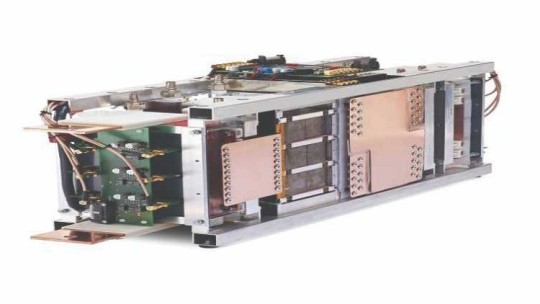
Market Overview
The SST market is still in its early stages but is projected to expand significantly in the coming years. According to recent market analyses, the global SST market size was valued at over USD 100 million in 2023 and is anticipated to grow at a compound annual growth rate (CAGR) of over 20% through 2030. The rising focus on renewable energy integration, electric vehicle (EV) infrastructure, and decentralized energy systems are key factors fueling this growth.
Key Drivers
1. Growing Renewable Energy Integration: Renewable energy sources like wind and solar operate intermittently and often require advanced grid support for stability. SSTs can manage bi-directional power flow and facilitate seamless integration of these renewable resources into the grid, making them an essential part of modern energy systems.
2. Electric Vehicle (EV) Charging Infrastructure: The shift toward EVs demands fast-charging stations and localized power control. SSTs can directly interface with DC-based EV chargers, enabling faster, more efficient charging while reducing infrastructure stress.
3. Urbanization and Smart Grids: With rising urbanization, the demand for compact and intelligent power distribution systems has surged. SSTs can replace bulky legacy transformers and provide real-time monitoring, remote control, and dynamic voltage management—critical features for smart city development.
4. Grid Modernization and Decentralization: Countries worldwide are investing heavily in grid modernization. SSTs play a key role in enabling microgrids and distributed energy resources (DERs), making them indispensable for next-generation grid architectures.
Market Segmentation
By Product Type:
Distribution Solid State Transformer
Power Solid State Transformer
Traction Solid State Transformer
By Application:
Energy
Transportation
Industrial
Defense
Others
The distribution SST segment dominates the market due to its widespread adoption in utility grids and urban networks. Meanwhile, transportation applications — especially in rail and EV charging — are expected to witness the highest growth rate.
Regional Insights
North America leads the SST market due to heavy investment in smart grid infrastructure and EV adoption. Europe follows closely with its aggressive renewable energy targets and sustainability initiatives. Meanwhile, Asia-Pacific is emerging as a lucrative market, driven by rapid industrialization, urban expansion, and governmental support for clean energy technologies, particularly in China, Japan, and South Korea.
Challenges and Restraints
Despite its promising outlook, the SST market faces several challenges:
High Initial Costs: SSTs are significantly more expensive than traditional transformers due to complex components and materials.
Technical Barriers: Heat dissipation, power handling, and system reliability at high voltage levels remain ongoing technical challenges.
Limited Standardization: The lack of universal standards and regulatory frameworks hinders widespread adoption.
However, as production scales and research advances, these hurdles are expected to diminish over time.
Competitive Landscape
Leading players in the SST market include:
ABB Ltd.
Siemens AG
Schneider Electric SE
General Electric
Mitsubishi Electric Corporation
These companies are investing in R&D to develop advanced SST prototypes and pilot projects aimed at grid modernization and renewable energy integration.
Future Outlook
The solid state transformer market holds immense potential as the world transitions toward cleaner, smarter, and more efficient power systems. With decreasing costs, technological advancements, and increasing policy support, SSTs are poised to become a cornerstone in the evolution of global power infrastructure.
As the industry matures, solid state transformers will no longer be a futuristic technology but a standard component in modern energy systems — bridging the gap between traditional power networks and the demands of the digital age.
0 notes
Text
Global Microgrid Controller Market Growth, Size, Share and Future Challenges 2034

An advanced system called a microgrid controller controls and maximizes the performance of a microgrid, which is a small network of loads and energy sources. Through the coordination of distributed energy resources (DERs), including solar panels, batteries, and generators, it guarantees stable, dependable, and efficient power delivery. The controller controls energy storage, balances supply and demand, keeps an eye on real-time data, and can smoothly transition between islanded and grid-connected modes. Through clever control algorithms, it increases energy efficiency and resilience during outages. Microgrid controllers are essential for supporting the integration of renewable energy sources, enabling decentralized energy systems, and easing the shift to a more intelligent, sustainable grid.
According to SPER market research, ‘Global Microgrid Controller Market Size- By Power source, By Product, By Application - Regional Outlook, Competitive Strategies and Segment Forecast to 2034’ state that the Global Microgrid Controller Market is predicted to reach 52.41 billion by 2034 with a CAGR of 22.89%.
Drivers:
Global demand for energy decentralization, grid dependability, and renewable integration is propelling the microgrid controller industry. As solar, wind, and storage systems become more widely used, there is a greater demand for intelligent controllers that maximize the use of dispersed energy resources. Government sustainable energy subsidies are speeding up the development of microgrids, especially in distant and underdeveloped regions. Further driving market expansion are the increasing frequency of grid disruptions and the need for energy resilience in critical infrastructure, healthcare facilities, and military installations. Microgrid controllers are becoming even more valuable as a result of developments in cloud, IoT, and AI technologies that allow for smarter, real-time control and analytics. Lastly, governments' and companies' net-zero pledges and decarbonization requirements are strengthening long-term demand.
Request a Free Sample Report: https://www.sperresearch.com/report-store/microgrid-controller-market?sample=1
Restraints:
The market for microgrid controllers has numerus constraints which hinders its growth. Adoption may be hampered by high upfront costs and difficult connection with current grid infrastructure. Technical obstacles are caused by incompatibilities between components from various vendors. Deployment may be halted by regulatory ambiguity, especially with regard to grid connections and energy pricing. As connectivity increases, so does the exposure to assaults, which is why cybersecurity worries are on the rise. Growth is also hampered by a lack of qualified workers to oversee and maintain sophisticated systems. Scaling is further complicated by market fragmentation and the absence of defined processes. Lastly, the necessity for highly intelligent and responsive control systems due to fluctuating renewable energy generation puts further strain on the dependability and performance of controllers.
North America leads the global microgrid controller market due to advanced infrastructure, strong policy support, and high renewable energy adoption. Some significant market players are ABB, Anarbic, Eaton Corp., Exelon, General Electric, Honeywell International, NRG International, Pareto, Siemens AG, Spirae and others.
For More Information, refer to below link: –
Global Microgrid Controller Market Growth
Related Reports:
Traffic Signal Controller Market Growth
Smart Irrigation Controllers Market Size
Follow Us –
LinkedIn | Instagram | Facebook | Twitter
Contact Us:
Sara Lopes, Business Consultant — USA
SPER Market Research
+1–347–460–2899
#SmartGrid#EnergyManagement#GridResilience#AIinEnergy#IoTEnergy#RenewableIntegration#EnergyStorage#SmartMicrogrids#EnergyMarketTrends#MicrogridInvestments#GlobalEnergySolutions#EuropeEnergyTransition
0 notes
Text
🎈Project Title: Integrated Renewable Energy Production Forecasting and Grid Stability Optimization.🍬🫖
ai-ml-ds-energy-optimization-forecasting-stability-023 Filename: renewable_grid_optimization.py Timestamp: Mon Jun 02 2025 19:46:55 GMT+0000 (Coordinated Universal Time) Problem Domain:Energy Systems, Power Grid Management, Renewable Energy Integration, Time Series Forecasting, Mathematical Optimization, Operations Research, Smart Grids. Project Description:This project tackles the dual…
#EnergyOptimization#EnergyStorage#GridStability#MIP#OperationsResearch#pandas#PowerSystems#Pyomo#python#RenewableEnergy#SmartGrid
0 notes
Text
🎈Project Title: Integrated Renewable Energy Production Forecasting and Grid Stability Optimization.🍬🫖
ai-ml-ds-energy-optimization-forecasting-stability-023 Filename: renewable_grid_optimization.py Timestamp: Mon Jun 02 2025 19:46:55 GMT+0000 (Coordinated Universal Time) Problem Domain:Energy Systems, Power Grid Management, Renewable Energy Integration, Time Series Forecasting, Mathematical Optimization, Operations Research, Smart Grids. Project Description:This project tackles the dual…
#EnergyOptimization#EnergyStorage#GridStability#MIP#OperationsResearch#pandas#PowerSystems#Pyomo#python#RenewableEnergy#SmartGrid
0 notes
Text
🎈Project Title: Integrated Renewable Energy Production Forecasting and Grid Stability Optimization.🍬🫖
ai-ml-ds-energy-optimization-forecasting-stability-023 Filename: renewable_grid_optimization.py Timestamp: Mon Jun 02 2025 19:46:55 GMT+0000 (Coordinated Universal Time) Problem Domain:Energy Systems, Power Grid Management, Renewable Energy Integration, Time Series Forecasting, Mathematical Optimization, Operations Research, Smart Grids. Project Description:This project tackles the dual…
#EnergyOptimization#EnergyStorage#GridStability#MIP#OperationsResearch#pandas#PowerSystems#Pyomo#python#RenewableEnergy#SmartGrid
0 notes
Text
🎈Project Title: Integrated Renewable Energy Production Forecasting and Grid Stability Optimization.🍬🫖
ai-ml-ds-energy-optimization-forecasting-stability-023 Filename: renewable_grid_optimization.py Timestamp: Mon Jun 02 2025 19:46:55 GMT+0000 (Coordinated Universal Time) Problem Domain:Energy Systems, Power Grid Management, Renewable Energy Integration, Time Series Forecasting, Mathematical Optimization, Operations Research, Smart Grids. Project Description:This project tackles the dual…
#EnergyOptimization#EnergyStorage#GridStability#MIP#OperationsResearch#pandas#PowerSystems#Pyomo#python#RenewableEnergy#SmartGrid
0 notes
Text
Hybrid Transformers: The Smart Solution for Modern Energy Systems
Introduction:
As the energy landscape evolves, the demand for smarter, more adaptable, and energy-efficient systems has grown. Hybrid transformers are an innovative solution that combines the capabilities of conventional transformers with advanced technology to meet the complex requirements of today’s power systems. Whether used in renewable energy grids, industrial setups, or smart infrastructures, hybrid transformers deliver reliability, flexibility, and performance in one powerful package.

Purpose of Hybrid Transformers:
To support multiple energy sources such as solar, wind, grid, or diesel generators in a single system
To offer efficient voltage regulation for both conventional and renewable systems
To enhance system stability and flexibility in dynamic power environments
To optimize energy use, reduce losses, and improve overall system performance
To act as an interface between traditional and modern power distribution networks
Key Features:
Multi-Source Compatibility: Works seamlessly with solar, wind, DG sets, and utility grid systems
Voltage Regulation: Maintains stable output across varying load and input conditions
High Efficiency: Optimized core and winding designs ensure minimal energy losses
Compact Design: Space-saving configurations suitable for both indoor and outdoor use
Thermal Protection: In-built temperature sensors for overload and overheat protection
Smart Control Options: Compatible with advanced monitoring systems for real-time performance tracking
Low Maintenance: Durable construction with corrosion-resistant enclosures
Customizable: Available in various ratings and configurations to suit client-specific needs.
Applications:
Hybrid transformers are widely used in:
Hybrid Renewable Energy Systems: Combining solar, wind, and grid power
Microgrids: Ideal for rural electrification and smart grid setups
Industrial Power Systems: Where multiple power sources are integrated for uninterrupted operations
EV Charging Infrastructure: Supporting grid-solar hybrid energy for electric vehicle stations
Commercial Complexes & Institutions: To efficiently manage mixed energy sources
Telecom & Data Centers: Ensuring reliable power backup with smart switching.
Conclusion:
Hybrid transformers are paving the way for the next generation of energy systems by integrating flexibility, intelligence, and efficiency. Their ability to manage diverse power inputs and deliver stable, reliable output makes them a valuable asset in today’s energy-conscious world. For industries, utilities, and institutions aiming to future-proof their power infrastructure, hybrid transformers offer a robust, long-term solution.
Company Details
📍 Company Name: Padmavahini Transformers 🌐 Website: Padmavahini Transformers 📞 Contact No: +91 99430 49222 📧 Email: [email protected] 📍 Address: S. F. No. 353/1, Door No. 7/140, Ruby Matriculation School Road, Keeranatham, Saravanampatti, Coimbatore, Tamil Nadu - 641035, India
🔗 Follow Us on Social Media: 📘 Facebook 📸 Instagram
#HybridTransformer#SmartEnergy#PowerInnovation#GreenTechnology#RenewableIntegration#EnergyEfficiency#PowerSolutions#SustainableEnergy#FutureOfPower#SmartGrid#PadmavahiniTransformers
0 notes
Text
🎈Project Title: Integrated Renewable Energy Production Forecasting and Grid Stability Optimization.🍬🫖
ai-ml-ds-energy-optimization-forecasting-stability-023 Filename: renewable_grid_optimization.py Timestamp: Mon Jun 02 2025 19:46:55 GMT+0000 (Coordinated Universal Time) Problem Domain:Energy Systems, Power Grid Management, Renewable Energy Integration, Time Series Forecasting, Mathematical Optimization, Operations Research, Smart Grids. Project Description:This project tackles the dual…
#EnergyOptimization#EnergyStorage#GridStability#MIP#OperationsResearch#pandas#PowerSystems#Pyomo#python#RenewableEnergy#SmartGrid
0 notes
Text
The Future of Electrical Power Distribution: Trends and the Evolving Role of Switchgear

The electrical power distribution landscape is undergoing a profound transformation, driven by technological advancements, environmental concerns, and evolving energy demands. As we move towards a more electrified and interconnected world, understanding the future of electrical power distribution — its emerging trends and the significant challenges it faces — is crucial for stakeholders across the energy sector. At the heart of this evolution lies switchgear, the critical equipment responsible for controlling, protecting, and isolating electrical circuits. This article delves into the key forces shaping the future of how electricity is generated, transmitted, and ultimately consumed, emphasizing the pivotal role of advanced switchgear products in this dynamic environment.
Key Trends Shaping the Future of Electrical Power Distribution and Switchgear:
Several powerful trends are converging to redefine the future of electrical power distribution, directly impacting the requirements and capabilities of switchgear:
· Decentralization and Distributed Generation (DG): The traditional model of centralized power plants is giving way to distributed generation sources like solar PV, wind turbines, microgrids, and energy storage. This shift necessitates switchgear capable of managing bidirectional power flow, seamlessly integrating these diverse sources, and providing advanced protection for localized networks.
· The Rise of Renewable Energy Integration and Advanced Switchgear: The urgent drive towards decarbonization demands the integration of intermittent renewable energy sources. Switchgear with smart grid capabilities, including sophisticated protection relays, fault ride-through functionalities, and advanced control systems, is essential to ensure grid stability and reliability when dealing with fluctuating renewable generation.
· Smart Grids and Intelligent Switchgear: The realization of smart grids relies heavily on digital technologies and intelligent devices. Smart switchgear is a cornerstone of this evolution, offering features like remote monitoring, automated fault detection and restoration, load management capabilities, and seamless communication with grid management systems.
· Electrification of Everything and Increased Demand on Switchgear: The growing trend of electrification in transportation, heating, and industry will significantly increase electricity demand. Switchgear will need to handle higher current ratings, provide robust and reliable connections for increased loads, and ensure the safety and efficiency of these electrified systems.
· Advanced Metering Infrastructure (AMI) and Data-Driven Switchgear: The data generated by AMI systems provides valuable insights into grid performance. Future switchgear can leverage this data for predictive maintenance, optimized operation, and enhanced diagnostics, contributing to a more efficient and reliable distribution network.
· Energy Storage Systems (ESS) and Switchgear Integration: Battery storage is crucial for grid stability and renewable energy integration. Switchgear plays a vital role in safely and efficiently connecting and managing the charging and discharging cycles of ESS at various scales.
· Cybersecurity for Critical Switchgear Infrastructure: With increasing digitalization, protecting switchgear and its control systems from cyber threats is paramount. Future switchgear must incorporate robust cybersecurity measures to ensure grid resilience and prevent disruptions.
Key Challenges in the Future of Electrical Power Distribution and Implications for Switchgear:
Addressing the following challenges will drive innovation and development in the switchgear products industry:
· Grid Modernization Costs and Investment in Advanced Switchgear: Upgrading the existing infrastructure with modern switchgear and smart grid technologies requires significant investment. Justifying these costs and finding effective funding mechanisms are key challenges.

· Integrating Distributed Generation and Ensuring Switchgear Compatibility: Connecting numerous DG sources requires switchgear that can manage bidirectional power flow, ensure protection coordination, and maintain power quality.
· Securing Digitalized Switchgear Against Cyber Threats: Implementing robust cybersecurity measures in switchgear and control systems is essential to protect the grid from malicious attacks.
· Adapting Regulatory Frameworks for New Switchgear Technologies: Regulations need to evolve to facilitate the adoption of advanced switchgear and smart grid technologies.
· Developing a Skilled Workforce for Installation and Maintenance of Modern Switchgear: The installation, commissioning, and maintenance of advanced switchgear require a skilled workforce with specialized knowledge.
· Replacing Aging Switchgear Infrastructure with Modern and Sustainable Solutions: The need to replace aging switchgear presents an opportunity to adopt more efficient, reliable, and environmentally friendly technologies.
The Evolving Role of Switchgear Products:
Switchgear is no longer just a means of switching circuits, it is becoming an intelligent and integrated component of the smart grid. The future demands switchgear products that are:
· Smarter: Equipped with advanced sensors, communication protocols, and digital control platforms.
· More Flexible: Capable of handling bidirectional power flow and seamlessly integrating diverse energy resources.
· More Reliable: Designed with advanced diagnostics, predictive maintenance capabilities, and enhanced fault management.
· More Secure: Incorporating robust cybersecurity features to protect critical infrastructure.
· More Sustainable: Utilizing environmentally friendly insulating mediums and materials.
Conclusion:
The future of electrical power distribution presents both exciting opportunities and significant challenges for the switchgear products industry. The trends of decentralization, renewable energy integration, smart grids, and electrification are driving the need for innovative and advanced switchgear solutions. Companies like Blitz Bahrain, specializing in providing high-quality switchgear products, are at the forefront of enabling this transformation. By understanding these evolving trends and addressing the associated challenges, Blitz Bahrain is committed to developing and supplying the cutting-edge switchgear necessary to build a safer, more reliable, and sustainable energy future for their customers.
#Switchgear#ElectricalPowerDistribution#FutureGrid#SmartGrid#RenewableEnergy#DistributedGeneration#GridModernization#PowerSystems#EnergyStorage#Cybersecurity#ElectricalInfrastructure#EnergyTransition#FutureofEnergy#ElectricalEngineering#PowerGrid#BlitzBahrain#electrical engineers#electrical supplies#electrical equipment#bahrain25
0 notes
Text
Utility Asset Management Market Overview Highlighting Technology Adoption and Regulatory Compliance Challenges
The Utility Asset Management Market plays a pivotal role in the modernization and operational efficiency of energy infrastructure globally. As utilities face increasing demand for reliable power, the need for intelligent asset management solutions has become more pronounced. These solutions encompass a broad spectrum of activities including asset monitoring, maintenance scheduling, risk assessment, and lifecycle management, all aimed at optimizing the performance and longevity of utility assets such as transformers, substations, pipelines, and power lines.

Market Overview
The global Utility Asset Management Market has witnessed steady growth due to the increasing complexity of utility networks and the integration of renewable energy sources. The market comprises software platforms, hardware components, and services that help utility companies monitor, control, and maintain their physical assets effectively. The adoption of IoT (Internet of Things), AI (Artificial Intelligence), and cloud computing has further accelerated this market, enabling real-time data collection and predictive maintenance.
Governments worldwide are emphasizing infrastructure upgrades to meet environmental regulations and enhance grid reliability. This trend drives investments in asset management solutions designed to reduce downtime, prevent failures, and optimize maintenance costs.
Key Drivers of Market Growth
Aging Infrastructure Most utility infrastructures in developed countries are aging and require continuous monitoring and maintenance to avoid failures. Asset management solutions provide a systematic approach to identify risks and prioritize repairs or replacements, thereby preventing costly outages.
Increasing Renewable Integration With the rise of renewable energy sources such as solar and wind, utilities must manage more complex grids. Asset management tools help in balancing supply and demand while maintaining grid stability.
Technological Advancements The adoption of advanced sensors, drones, and AI analytics enables utilities to perform condition-based monitoring. This shift from reactive to predictive maintenance reduces operational costs and enhances asset lifespan.
Regulatory Compliance Stringent regulations related to safety, environmental impact, and service reliability compel utilities to adopt comprehensive asset management strategies. These tools help ensure compliance by maintaining detailed records and facilitating audits.
Cost Efficiency Effective asset management reduces unplanned outages and extends the operational life of assets, translating into significant cost savings for utility companies.
Market Segmentation
The Utility Asset Management Market can be segmented based on type, deployment model, application, and region.
Type: Software solutions (asset performance management, enterprise asset management), hardware (sensors, communication devices), and services (consulting, implementation, maintenance).
Deployment Model: On-premises and cloud-based solutions. Cloud adoption is increasing due to its scalability and remote accessibility.
Application: Power generation, transmission and distribution, water utilities, and gas utilities.
Region: North America dominates the market due to high infrastructure investments, followed by Europe and Asia-Pacific, where rapid urbanization and industrialization are driving demand.
Challenges Facing the Market
Despite promising growth, the Utility Asset Management Market faces challenges:
High Initial Investment: Implementing advanced asset management systems involves significant upfront costs, which may deter smaller utilities.
Data Security Concerns: The increasing use of IoT and cloud platforms raises concerns about data privacy and cybersecurity.
Skilled Workforce Shortage: Managing and analyzing complex asset data require skilled personnel, which are often in short supply.
Future Trends
Looking ahead, the market is expected to evolve with innovations such as digital twins—virtual replicas of physical assets for real-time simulation and optimization. Integration of 5G technology will enable faster data transmission and more responsive asset management systems.
Additionally, sustainability will be a major focus, with utilities leveraging asset management to optimize energy consumption and reduce carbon footprints.
Conclusion
The Utility Asset Management Market is essential for ensuring the resilience, efficiency, and sustainability of utility infrastructures worldwide. As the energy landscape continues to evolve with the integration of renewables and smart technologies, asset management solutions will be crucial in helping utilities navigate this complexity while maintaining reliable service. Investments in advanced technologies, combined with strategic regulatory support, will likely propel this market forward, benefiting both utilities and consumers.
#UtilityAssetManagement#AssetManagement#EnergyInfrastructure#SmartGrid#RenewableEnergy#PredictiveMaintenance#IoTInUtilities
0 notes